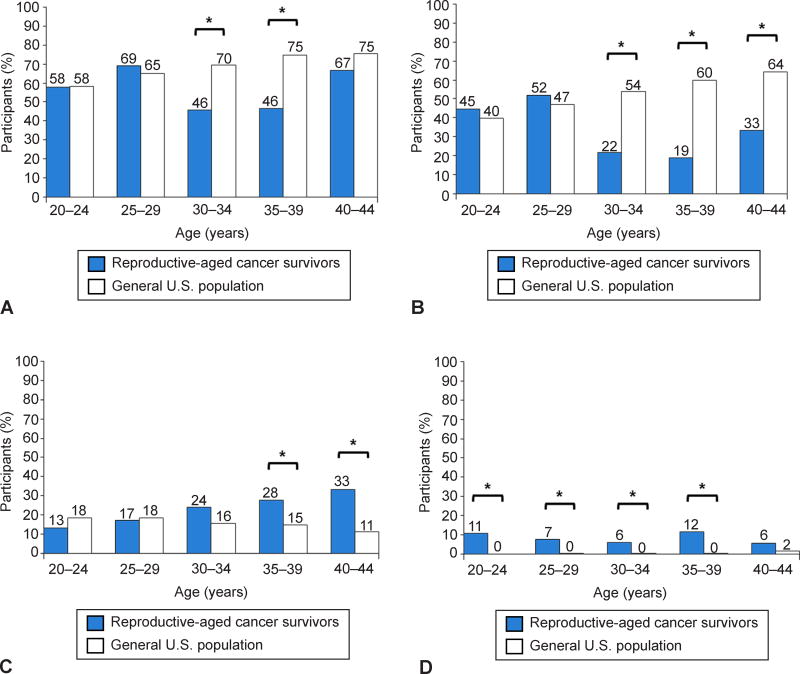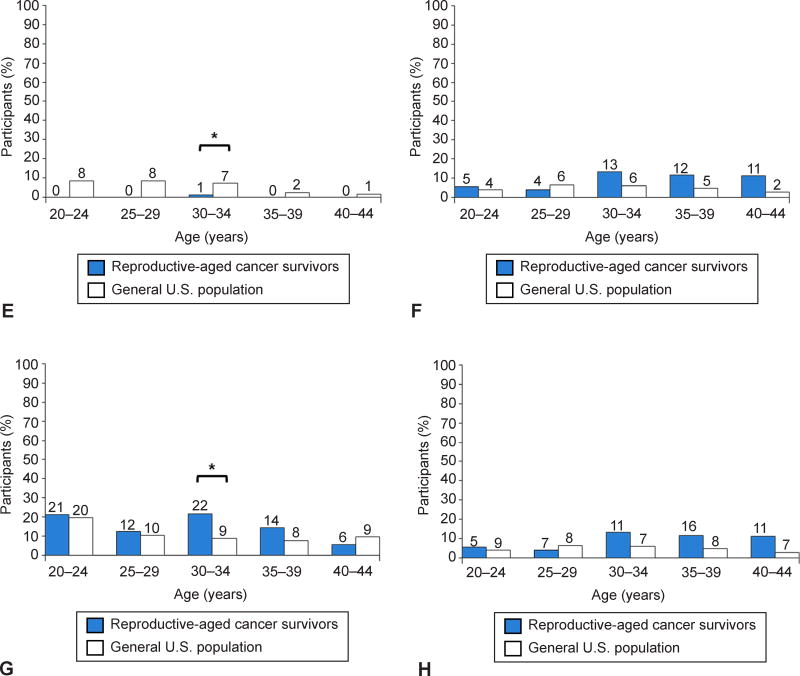Fig 2.
Comparison of contraceptive practices between reproductive-aged cancer survivors (shown in blue) and women in the general U.S. population, as assessed by the National Survey of Family Growth (shown in white): use of contraception (A), use of World Health Organization (WHO) tiers I-II methods (B), use of WHO tiers III-IV methods (C), surgically sterile (D), pregnant or postpartum (E), seeking pregnancy (F), not sexually active (G), sexually active (H). The total number of survivors by age group is as follows: aged 20–24 years (n=38), aged 25– 29 years (n=81), aged 30– 34 years (n=83), aged 35– 39 years (n=69), and aged 40–44 years (n=18). *Nonoverlapping 95% confidence intervals of the proportions in the survivor and general populations.


